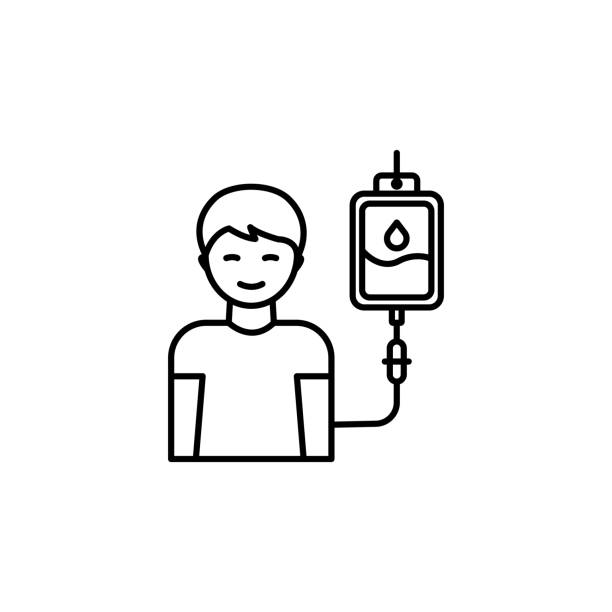Alternative Treatments
What Are The Best IV Fluids For Dehydration
IV fluids are one of the most effective therapies for dehydration. Dehydration happens when the body loses more fluids than it absorbs. It can be caused by a number of circumstances, including illness, physical activity, and exposure to hot temperatures. These fluids are delivered directly into the bloodstream via a vein, allowing the body to swiftly absorb the required fluids and electrolytes.
There are several types of IV fluids available, each with its own distinct qualities and benefits. Choosing the proper IV fluid for dehydration can be a difficult procedure, so consult with a healthcare expert to identify the best course of action.
In this article, we will look at the many types of IV fluids available for the treatment of dehydration. We will talk about the symptoms of dehydration, the benefits of IV fluids, and the potential risks and adverse effects of using them. We believe that by giving clear and comprehensive information, readers will be able to make more educated healthcare decisions and receive the best possible dehydration treatment.

Understanding Dehydration
Dehydration occurs when the body loses more fluids than it takes in. This can happen due to various reasons, including excessive sweating, vomiting, diarrhea, or not drinking enough fluids. Dehydration can range from mild to severe, and it is crucial to address it promptly to avoid further complications.
Symptoms and Causes
Dehydration symptoms may include a dry mouth, severe thirst, dark yellow urine, dizziness, and fatigue. In severe circumstances, dehydration can cause confusion, fast heartbeat, and even coma.
The reasons of dehydration might vary. In some circumstances, it might be attributed to excessive perspiration during physical exercise or hot weather. Others may experience vomiting or diarrhea as a result of their illness. Inadequate fluid intake or a lack of access to water can also lead to dehydration.
Assessing Severity
To decide the best course of action, the severity of the dehydration must be assessed. Mild dehydration can typically be addressed by consuming fluids, however severe dehydration may necessitate medical intervention.
To determine the severity of dehydration, consider the symptoms, urine color, and skin suppleness. Moderate dehydration might result in dark yellow urine and skin that takes time to recover to normal after being pinched. In contrast, a person with extreme dehydration may produce little to no pee and have pinched skin for several seconds.
Overall, dehydration is a frequent and possibly serious ailment that requires immediate treatment. Understanding the symptoms and causes of dehydration, as well as recognizing its severity, allows one to take appropriate efforts to alleviate it.

Types of IV Fluids
There are three types of intravenous fluids: isotonic, hypotonic, and hypertonic solutions. Each variety has a distinct purpose and is used to treat various forms of dehydration.
Isotonic Solutions
Isotonic solutions contain particles at the same concentration as the body’s cells and are used to cure mild to moderate dehydration. The most often used isotonic solution is normal saline, which comprises 0.9% sodium chloride in water. Normal saline is used to restore lost fluids and electrolytes and is commonly utilized in emergencies.
Lactated Ringer’s is an isotonic solution containing sodium chloride, potassium chloride, calcium chloride, and sodium lactate. It is frequently used to alleviate dehydration resulting from vomiting, diarrhea, or profuse perspiration.
Hypotonic Solutions
Hypotonic solutions contain fewer particles than the body’s cells and are used to cure severe dehydration. These solutions are commonly used to rehydrate individuals who have lost a significant amount of fluids owing to burns or heavy perspiration.
A hypotonic solution, such as dextrose 5% in water, contains 5% dextrose. This solution is frequently used to treat dehydration induced by diabetes or other disorders resulting in high blood sugar.
Hypertonic Solutions
Hypertonic solutions, which contain a higher concentration of particles than the body’s cells, are used to treat severe dehydration induced by shock or severe burns. These solutions are frequently utilized in critical care settings and require strict monitoring.
A hypertonic solution is one that includes more sodium chloride than regular saline. This solution is used to treat extreme dehydration, and it can help raise blood pressure and enhance organ function.
Overall, the choice of IV fluid is determined by the severity and etiology of dehydration. The most widely used IV fluids for dehydration are crystalloids, which include normal saline and lactated Ringer’s. Colloids like albumin and hetastarch can be employed in certain instances, although they are typically reserved for critical care settings.

Administering IV Fluids
In hospitals and clinics, IV fluids are commonly used to treat dehydration. Intravenous therapy is the injection of fluids directly into a patient’s bloodstream using a needle. This procedure ensures that fluids are rapidly absorbed and dispersed throughout the body.
Procedure and Monitoring
The technique for giving IV fluids consists of numerous steps. First, the nurse or doctor will determine the best type of IV fluid based on the patient’s condition and fluid balance. The fluids may contain electrolytes like sodium and potassium to help the patient maintain fluid balance.
Next, the nurse or doctor will inject a needle into a vein, typically in the patient’s arm. They’ll next connect the IV bag to the needle and adjust the flow rate to give the right amount of fluid. The patient’s blood pressure and heart rate will be checked during the procedure to verify that they are responding appropriately to the treatment.
Potential Complications
While IV fluids are generally safe, there are certain issues that may arise. One typical problem is infiltration, which occurs when the needle dislodges from the vein and fluids flow into the surrounding tissue. This can lead to swelling, inflammation, and discomfort.
Phlebitis, or vein irritation, is another potential consequence. This can happen if the needle is in place for too long or if the IV fluids are overly acidic or concentrated. Symptoms of phlebitis include redness, swelling, and discomfort near the injection site.
Nurses and doctors must be aware of these potential problems and take preventive measures. They should also thoroughly monitor the patient throughout the process to verify that they are responding positively to the treatment.
In conclusion, IV fluids are a popular treatment for dehydration in hospitals and clinics. The method consists of selecting the appropriate IV fluid, placing a needle into a vein, and regulating the flow rate to give the proper amount of fluids. While IV fluids are generally safe, occasional problems may develop, such as infiltration and phlebitis. Nurses and doctors should be aware of these problems and take precautions to avoid them.

Rehydration and Recovery
Dehydration can be a dangerous condition that requires immediate treatment. The most effective technique to treat dehydration is to restore lost fluids and electrolytes. Rehydration can be accomplished with oral or intravenous (IV) fluids. IV fluids are commonly used in severe episodes of dehydration, but they are costly and require physician care. For mild to severe dehydration, oral rehydration solutions (ORS) are frequently prescribed.
Diet and Oral Hydration
ORS are composed of water, electrolytes, and sugar. They are intended to replenish fluids and electrolytes lost via dehydration. ORS are sold over the counter and can be used at home. Sports drinks are not suggested for rehydration since they do not have an adequate balance of electrolytes and sugar.
In addition to ORS, drinking water and eating meals with high water content can aid in rehydration. Watermelon, cucumbers, and strawberries are excellent providers of water. It is critical to avoid drinks containing caffeine or alcohol because they can exacerbate dehydration.
Ongoing Management and Prevention
Once rehydration is completed, continuing monitoring and prevention are critical. Maintaining sufficient hydration levels can help prevent future dehydration. This can be accomplished by staying hydrated throughout the day and consuming foods high in water content. Electrolytes like sodium, potassium, chloride, calcium, and magnesium are also necessary for proper hydration.
Finally, rehydration is essential for the treatment of dehydration. ORS, drinking water, and water-rich meals are all efficient ways to rehydrate. Ongoing monitoring and prevention are critical for maintaining adequate hydration levels.
Conclusion
Finally, identifying the optimal intravenous (IV) fluids for dehydration requires taking into account a number of parameters, including the reason and severity of the dehydration, the individual patient’s demands, and specific electrolyte imbalance. While isotonic solutions such as normal saline are widely used and well tolerated, electrolyte-based solutions may be preferable in some cases. Consulting with healthcare professionals is critical for determining the individual needs of each client and tailoring the IV fluid therapy accordingly. The choice of IV fluids should be made after a thorough assessment of the patient’s medical history, clinical condition, and electrolyte balance. Because dehydration management is a complex process, a collaborative approach between healthcare practitioners and patients enables the most effective and safe IV fluid protocol for optimum rehydration.
Journey of self discovery


